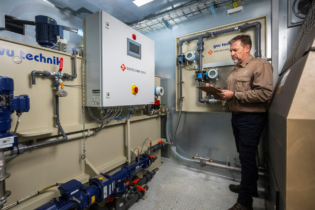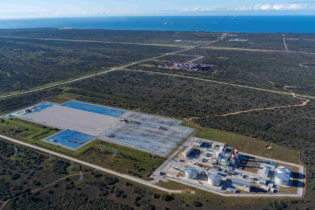Private sector formal building activity has been decimated by the Covid-19 pandemic and subsequent lockdowns and restrictions. Stats SA confirmed that in February this year, there was yet another contraction in activity, with the SQM of buildings reported as completed, contracting by 36.2% compared to the same month last year.
This is roughly 300 000 less SQM of building in the month, with just under 540 000 SQM reported as completed, compared to 840 000 in the same month last year. Building has consistently slowed, and this marks the 16th consecutive month of year-on-year contractions. Over the last year, there have been a staggering 50.6% less SQM completed. There have been collapses in both the residential housing and non-residential commercial markets over the last year, with plans reported as completed down by 50.3% and 45.9% respectively. This means that over the last 12-month period, activity levels have roughly halved, compared to the previous 12 month period (March 2019 to February 2020). This is an unbelievable collapse in private sector formal building activity, despite interest rates being at record lows. The same cannot be said for the informal building industry, however. Although it is difficult to accurately measure, with a lack of data, the sale of hardware does give us some insight into the informal sector, and hardware sales have been booming. Recent data released by Stats SA shows yet another increase in the sale of ‘hardware, paint, and glass’, up by a robust 24.6 percent and 5.9 percent in January and February this year respectively. Moreover, hardware sales grew by 10.7% in the 2nd half of 2020 y-y, while overall retail sales unsurprisingly contracted by 3.8% in the same period.So, while the more formal industry is at record lows, there is definitely increased informal building activity.
Looking forward When looking forward, the outlook remains bleak, with huge contractions in demand for private sector buildings in all categories, there was however some positive data to report on in February. In terms of building plans reported as approved through municipalities (a leading indicator, giving us an idea of building to come in the pipeline), there was a 17.3% increase in February, which is good. This was driven both the housing and commercial market, but most notable was over 300 000 SQM of industrial space approved, with 216 000 of the 300 000 reported in KwaZulu Natal, which is surely a megaproject or two. This is in fact the highest number of industrial SQM approved since late 2008, in the build-up to the global financial crisis, and was double the number of SQM approved in the same month last year. There was also 47% more SQM of office space approved, and 12.7% more SQM of retail building approved. In terms of the office space, this is coming off quite a low base, with just 21 000 SQM approved, so we would not read too much into it. The retail spaces approved are more robust, with just under 70 000 SQM approved. In terms of the housing market, there was a 10.1 percent increase in SQM approved in February and marked the 4th consecutive month of increase, which is good. There have been very healthy increases in approvals for ‘luxury housing’ over the last 6 months, with consecutive double-digit increases, most recently with 38.5% more SQM approved in February, with almost 390 000 SQM approved. There was also 32.3% more SQM of flats and townhouses approved, while there was a contraction in low-cost housing approvals. This has certainly improved the outlook for residential housing, but it still remains to be seen whether the bounce-back can be sustained over the next year or so.







